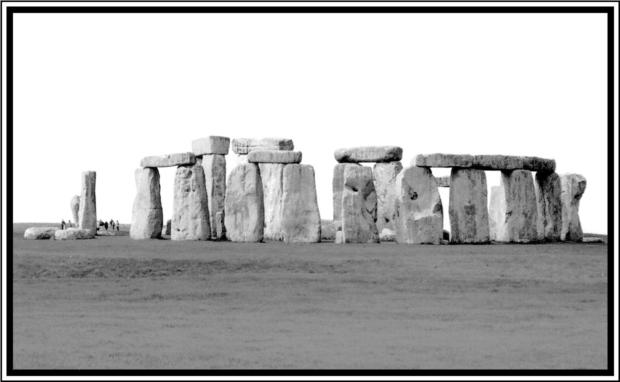Hidden History: Lost Civilizations, Secret Knowledge, and Ancient Mysteries (13 page)
Read Hidden History: Lost Civilizations, Secret Knowledge, and Ancient Mysteries Online
Authors: Brian Haughton
Tags: #Fringe Science, #Gnostic Dementia, #U.S.A., #Alternative History, #Amazon.com, #Retail, #Archaeology, #History

The priest showed Churchward a
number of ancient tablets written by
the Naacal Order in a forgotten ancient language, supposed to be the
original language of mankind, which
he taught the officer to read.
Churchward later asserted that certain stone artifacts recovered in
Mexico contained parts of the Sacred
Inspired Writings of Mu, perhaps taking ideas from Augustus Le Plongeon
and his use of the Troana Codex to
provide evidence for the existence of
Mu. Unfortunately, Churchward never
produced any evidence to back up his
exotic claims: He never published
translations of the enigmatic Naacal
tablets, and his books-though they
still have many followers today-are
better read as entertainment than factual studies of Lemuria/Mu.
Zoologists and geologists now explain the distribution of lemurs and
other plants and animals in the area
of the Pacific and Indian Oceans to be
the result of plate tectonics and continental drift. The theory of plate tectonics (and it is still a theory) affirms
that moving plates of the Earth's crust
supported on less rigid mantle rocks
causes continental drift, volcanic and
seismic activity, and the formation of
mountain chains. The concept of continental drift was first proposed by
German scientist Alfred Wegener in
1912, but the theory did not gain general acceptance in the scientific community for another 50 years. With
recent understanding of plate tectonics, geologists now regard the theory
of a sunken continent beneath the
Pacific as an impossibility.
The idea of Lemuria as something
other than a physical place, perhaps
more akin to a lost spiritual homeland,
seems to derive from the writings of
colorful Russian occultist Helena
Petrovska Blavatsky (1831-1891).
Blavatsky was the co-founder (together
with lawyer Henry Steel Olcott) of the
Theosophical Society in New York, in
1875. The society was an esoteric order designed to study the mystical
teachings of both Christianity and
Eastern religions. In her massive tome,
The Secret Doctrine (1888), Blavatsky describes a history originating millions
of years ago with the Lords of Flame
and goes on to discuss five Root Races
which have existed on earth, each one
dying out in an earth-shattering cataclysm. The third of these Root Races
she called the Lemurian, who lived a
million years ago, and who were bizarre telepathic giants, keeping dinosaurs as pets. The Lemurians
eventually drowned when their continent was submerged beneath the Pacific Ocean. The progeny of the
Lemurians was the fourth Root Race,
the human Atlanteans, who were
brought down by their use of black
magic, when the continent of Atlantis
sank beneath the waves 850,000 years
ago. Present humanity represents the
fifth Root Race.

Madame H.P. Blavatsky, in New York,
1877.
Blavatsky maintained that she
learned all of this from The Book of
Dzyan, supposedly written in Atlantis
and shown to her by the Indian adepts
known as Mahatmas. Blavatsky never
claimed to have discovered Lemuria;
in fact she refers to Philip Schlater
coining the name Lemuria, in her writings. It has to be said that The Secret
Doctrine is an extremely difficult book,
a complex mixture of Eastern and
Western cosmologies, mystical ramblings, and esoteric wisdom, much of it
not meant to be taken literally.
Blavatsky's is the first occult interpretation of Lemuria, but on one level it
should not be equated with the physical continent proposed by Churchward. What Blavatsky and other
occultists have since suggested concerning Lemuria could be partly interpreted as an ideal spiritual condition
of the soul, a kind of lost spiritual
land. Nevertheless, there are some
psychics and prophets who even today
regard the existence of ancient
Lemuria or Mu as a physical reality.
Indeed, there are a few who, when hypnotically regressed, have recalled
former lives as citizens on the doomed
continent.
This is not, however, quite the end
of the story. In the last 20 years, submerged civilizations have once again
been in the news, due to a number of
intriguing underwater discoveries. In
1985 off the southern coast of
Yonaguni Island, the western-most island of Japan, a Japanese dive tour
operator discovered a previously unknown stepped pyramidal edifice.
Shortly afterwards, Professor Masaki
Kimura (a marine geologist at Ryukyu
University in Okinawa) confirmed the
existence of the 600 foot wide, 88 foot high structure. This rectangular stone
ziggurat, part of a complex of underwater stone structures in the area
which resemble ramps, steps, and terraces, is thought to date from somewhere between 3,000 to 8,000 years
ago. Some have suggested that these
ruins are the remains of a submerged
civilization-and that the structures
represent perhaps the oldest architecture in the world. Connections with
Lemuria and Atlantis have also been
mentioned. However, some geologists
with knowledge of the area insist that
the underwater buildings are natural,
and similar to other known geological
formations in the region. The debate
is still continuing on these controversial structures.
In 2001, the remains of a huge lost
city were located 118 feet underwater
in the Gulf of Cambay, off the western
coast of India. A year later, further
acoustic imaging surveys were undertaken, and evidence was recorded for
human settlement at the site, including the foundations of huge structures,
pottery, sections of walls, beads,
pieces of sculpture, and human bone.
One of the wooden finds from the city
has been given a radiocarbon date of
7500 B.C., which would make the site
4,000 years earlier than the oldest
known civilization in India. Research
is ongoing at this fascinating site,
which-if the dates are proved correctmay one day radically alter our understanding of the world's first civilizations.
Whether these underwater finds in the
Pacific and Indian Oceans prove to be
the remains of forgotten civilizations
or not, one thing is certain: Man will
always be searching for a lost homeland or a more spiritually satisfying
ancient past. In this sense, Lemuria or
Mu will always be more than just a
physical place.


Photograph by the author.
The monumental ruins at Stonehenge brooding mysteriously on Salisbury Plain.
Looming like a group of huddled
stone giants on Salisbury Plain,
Wiltshire, in southern England,
Stonehenge is perhaps the most recognizable ancient monument in the world.
The name Stonehenge originates from
Anglo-Saxon and roughly translates
as hanging stones. But the history of
the great monument dates back thousands of years before the Saxons came
to Britain, sometime in the fifth century A.D. Its origins go back beyond the
mysterious Celtic Druids of the last
few centuries B.C., before iron was
known in Europe, and before the Great
Pyramid was erected in the sands of
Egypt. Who built this enigmatic stone
monument and what role did it play
in the prehistoric landscape of
England and Europe all those thousands of years ago?
What visitors see today when they
visit Stonehenge is a circular setting
of large standing stones surrounded by
earthworks, the remnants of the last
in a series of monuments erected on
the site between c. 3100 B.C. and 1600
B.C. During this period, Stonehenge
was built in three broad construction
phases, although there is evidence for
human activity on the site both before
and after these dates. In fact, one of
the most important and fascinating
discoveries ever made in the area of Stonehenge was that of four large
Mesolithic pits or post holes dating to
between 8500 and 7650 B.C., found beneath the modern carpark at the site.
These huge post holes had a diameter
of around 2.4 feet, and had once held
pine posts. Three of the holes were
aligned east to west, suggesting a
ritual function-it has been suggested
that they may have held totem poles,
and indeed it is difficult to see what
other purpose they could have served.
The area around Stonehenge is full of
prehistoric monuments, a number of
which were constructed in the early
Neolithic period (c. 4000 B.c.-3000 B.C.)
and thus predate the Stonehenge
monument. Examples include the long
barrow (communal burial chamber) at
Winterbourne Stoke, 1.4 miles away;
the causewayed enclosure (a type of
large prehistoric earthwork) known as
Robin Hood's Ball, 1.2 miles northwest
of Stonehenge; and the Lesser Cursus
(a long, narrow, rectangular earthwork
enclosure) 1,968 feet to the north.
Thus, when the builders of the first
stage of construction at Stonehenge
began work, they were already operating in a sacred landscape, one that
had seen ritual use for more than 5,000
years.
The first of Stonehenge's three construction phases was begun around
3100 B.C. and consisted of a circle of timber posts surrounded by a ditch and
bank. This henge, (henge used in the
archaeological sense to mean a circular or oval-shaped flat area enclosed
by a boundary earthwork) measured
approximately 360 feet in diameter,
and possessed a large entrance to the
northeast and another smaller one
to the south. This monument was dug
by hand using deer antlers and the
shoulder blades of oxen or cattle. Modern excavations of the ditch have
recovered antlers used in the construction that were deliberately left
behind by the builders of this monument. One odd fact about this phase is
that there were other animal bones,
mainly from cattle, placed in the bottom of the ditch, which proved to be
200 years older than the antler tools
used to dig the structure. It seems that
the people who buried the items kept
them for some time before burial; perhaps the bones were sacred objects
removed from a previous ritual location and brought to Stonehenge. There
is little remaining evidence for Phase
II at Stonehenge, though judging by
finds of cremated bones from at least
200 bodies, the site must have functioned as a cremation cemetary.
Phase III at the site, beginning
around 2600 B.C., involved the rebuilding of the simple earth and timber
henge in stone. Two concentric circles
of 80 bluestone pillars were erected at
the center of the monument. These
stones, weighing about 4 tons each,
were carved and transported from the
Preseli Hills, in Pembrokeshire,
southwest Wales, and brought by a
route at least 186 miles long. Apart
from the bluestones, a 16 foot long
blue-gray sandstone, now known as the
Altar Stone, was brought to
Stonehenge from near Milford Haven
on the coast to the south of the Preseli
Hills. How the bluestones arrived on
Salisbury Plain is a subject of much
controversy, though most archaeologists nowadays believe that they were
brought there by man. The most obvious way for the builders of Stonehenge
to transport the stones would have
been to drag them down to the sea at Milford Haven by roller and sledge,
and then float them to Stonehenge on
rafts by sea and river-an incredible
achievement of organization and dedication. An experiment to duplicate
this feat was undertaken in 2001, when
volunteers managed to pull a 3-ton
stone down to the sea from the Preseli
Hills in a wooden sledge on rollers, but
when the stone was placed on the raft
it slipped into the sea and sank. Intriguingly, an old legend held that
Stonehenge originated with Merlin the
wizard, who had a huge structure
known as the Giant's Dance magically
transported from Ireland. Could the
journey of the bluestones form Wales
be a disorted memory of Stonehenge
originating in the west?
